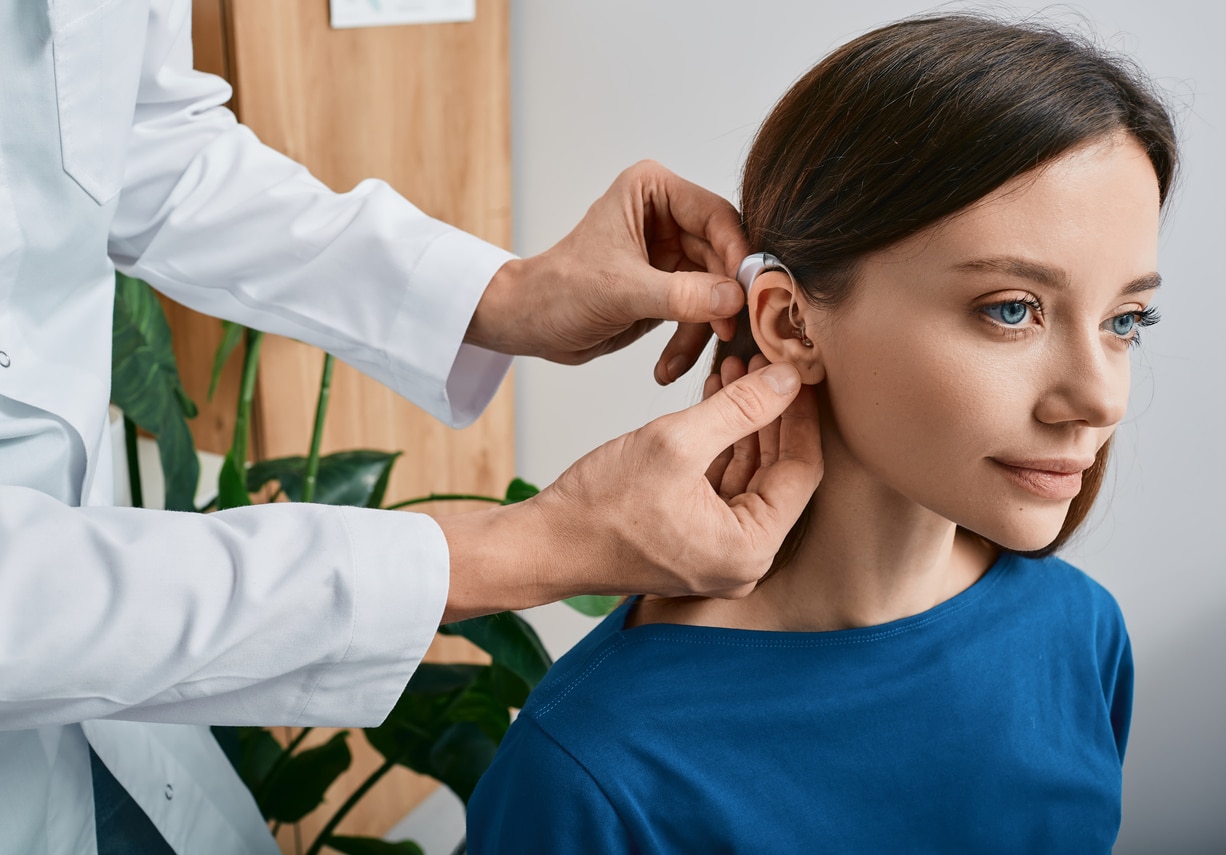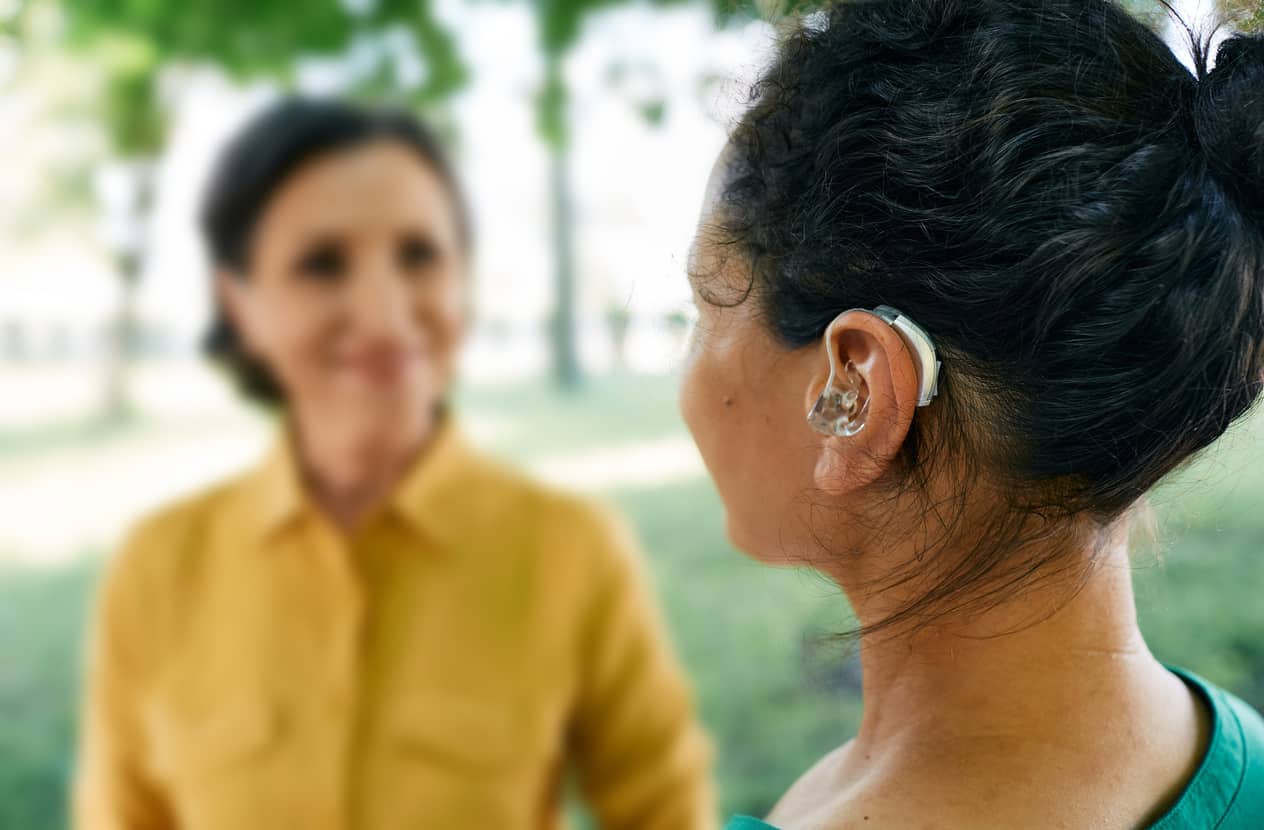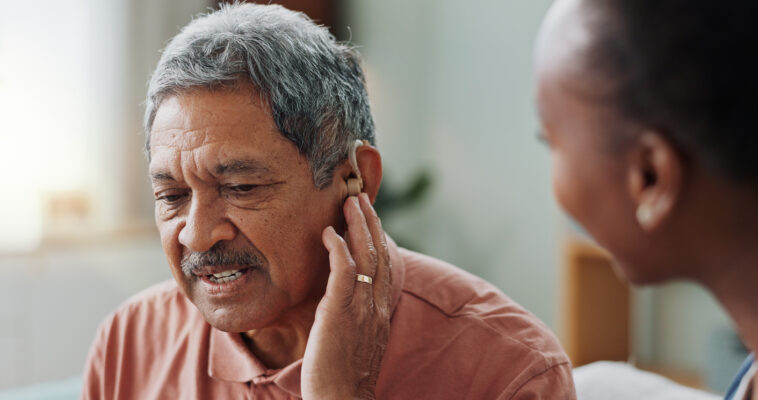The hearing aid is often described as beneficial for enjoying conversations with loved ones, having better daily comfort (especially if hearing aids reduce unpleasant tinnitus) and working in the best conditions. However, we often forget to point out that the first days with hearing aids can sometimes be difficult, because the brain must adapt to these new amplified sounds, often perceived as too loud or even strange, especially in noisy environments. Added to this is the physical discomfort caused by the device itself in the ear, which can then make the initial experience trying. Getting used to wearing hearing aids can therefore be a real challenge for many new users.
Adopting good reflexes from the first days and weeks of use can therefore prove crucial for a successful adaptation. So, how can you manage the initial discomfort and make your hearing aids your best allies in everyday life? Discover these essential tips to support them well and make the transition to efficient hearing more pleasant.
Follow the recommendations of your hearing care professional
Your hearing care professional is your best ally in this discovery process. It is therefore necessary to carefully follow his advice and attend regular follow-up visits to adjust your hearing aids, improve your comfort and resolve any problems you may encounter. Sometimes, changing a few parameters in store or making adjustments can be enough to adapt to your progress and optimize your comfort. A hearing test online or with a hearing care professional also allows for good monitoring of the progress of your hearing loss as well as for checking the effectiveness of your hearing aids, especially a few weeks after starting to use your hearing aids.

Start with short periods and go gradually
When you first start wearing hearing aids, it is recommended that you use them for short periods at first. Start with one to two hours per day, then gradually increase the daily wearing time. This approach allows your brain to gradually get used to new sounds. Also take care to test your hearing aids in different sound environments. Start with quiet environments, then try noisier settings like restaurants or family gatherings. This will also help your brain get used to distinguishing sounds in various contexts.
And above all, be patient and persistent. Indeed, adapting to hearing aids takes time. So, don’t be discouraged if you’re not comfortable right away.
Practice active listening by wearing your hearing aids and practice
Active listening involves focus on the sounds you hear and try to identify them. This could for example include conversations, nature sounds or even house sounds. This practice strengthens your ability to understand and interpret sounds with your hearing aids. In the long run, this allows you to maximize the effectiveness of the prostheses and overcome initial difficulties. There are also apps and exercises designed to help people get used to their hearing aids. These can be listening games or applications that simulate various sound environments. Do not hesitate to test them for improve your ability to process amplified sounds.

Accessorize and maintain your hearing aids
Many modern hearing aids come with useful accessories that can enhance your hearing experience. Remote controls, remote microphones and Bluetooth connectors can indeed help improve sound clarity and listening comfort in different situations. If your budget allows it or you benefit from the 100% Health Basket on the hearing aids chosen, do not hesitate to use it. Furthermore, think about clean your hearing aids regularly following the manufacturer’s advice. This is indeed crucial for their proper functioning, because it will prevent the accumulation of earwax and dust!


